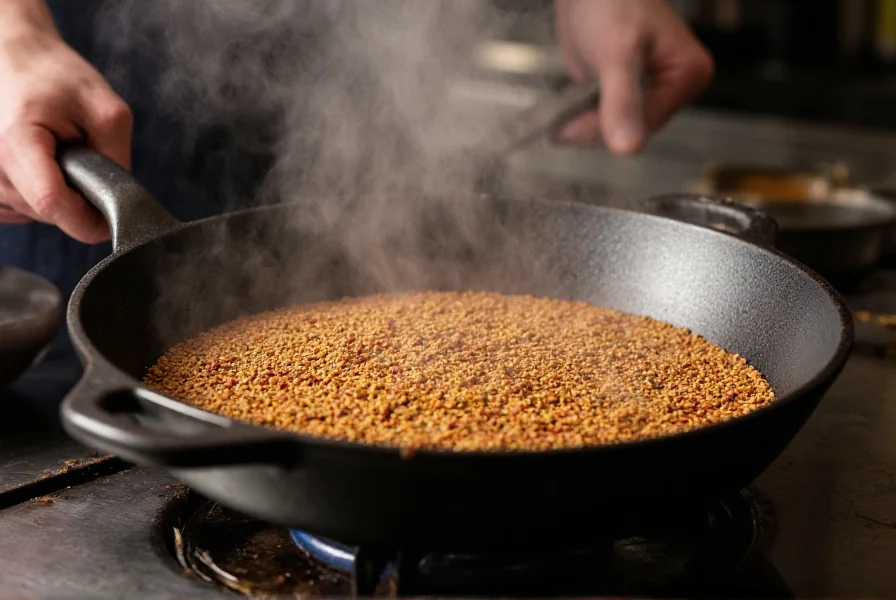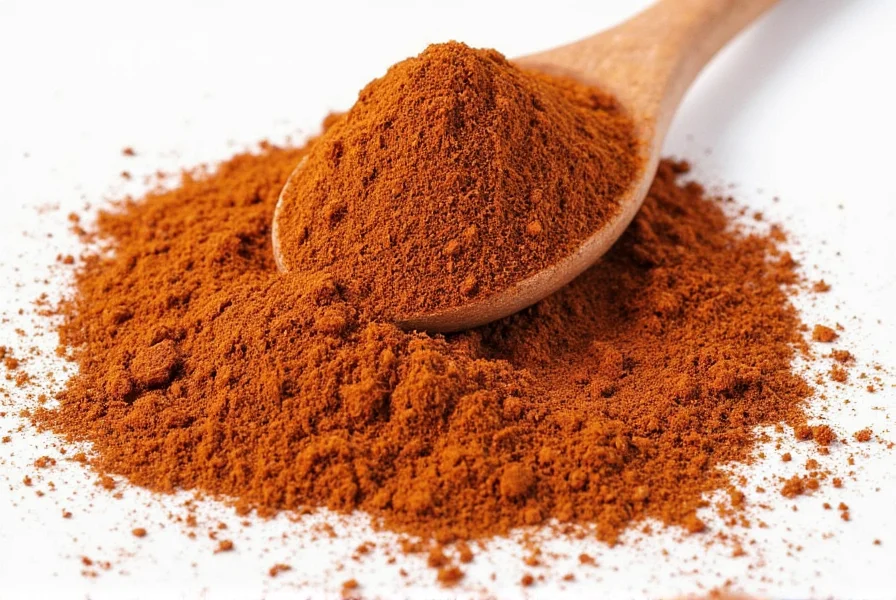Cumin's distinctive aroma and flavor have made it one of the world's most widely used spices, featuring prominently in Indian, Middle Eastern, Mexican, and North African cooking traditions. This ancient spice, scientifically known as Cuminum cyminum, grows as a small annual plant reaching about 12-20 inches in height, producing delicate white or pink flowers followed by crescent-shaped seeds that contain the characteristic flavor compounds.

Historical Background and Global Journey
Archaeological evidence shows cumin was used in ancient Egypt around 2000 BCE, where it served both culinary and embalming purposes. The spice traveled along early trade routes, becoming integral to Roman cuisine before spreading throughout Europe and eventually to the Americas. Spanish colonists introduced cumin to Mexico in the 17th century, where it became essential to traditional dishes like mole and chili con carne.
Physical Characteristics and Flavor Profile
Cumin seeds measure approximately 3-6mm in length, with a narrow, boat-shaped appearance and longitudinal ridges. They range in color from yellowish-brown to dark brown. When toasted, these seeds release aromatic compounds that create cumin's signature warm, earthy flavor with subtle citrus notes and a slightly peppery finish.
| Form | Appearance | Flavor Intensity | Best Uses |
|---|---|---|---|
| Whole Seeds | Slender, curved seeds with ridges | Milder when raw, intensifies when toasted | Tempering in oils, pickling, breads |
| Ground Cumin | Uniform reddish-brown powder | Stronger, immediate flavor impact | Curries, spice blends, rubs, sauces |
Culinary Applications Across World Cuisines
Cumin serves as a foundational spice in numerous global dishes. In Indian cooking, it features prominently in garam masala and curry powders. Middle Eastern cuisine relies on cumin for falafel, hummus, and baharat spice blends. Mexican kitchens use it extensively in chili powders, taco seasonings, and mole sauces. North African tagines and Moroccan ras el hanout wouldn't achieve their characteristic depth without cumin's earthy notes.
Professional chefs often toast whole cumin seeds in dry pans before grinding to maximize flavor. This simple technique releases essential oils, transforming the spice's profile from earthy to warm and nutty. For home cooks wondering what is cumin spice used for, consider adding it to bean dishes, roasted vegetables, or homemade spice blends for immediate flavor enhancement.
Nutritional Profile and Potential Health Benefits
Two teaspoons of ground cumin (about 4g) provide approximately:
- 32 calories
- 2.8g carbohydrates
- 1.4g protein
- 1.4g fat
- 18% of daily iron needs
- Significant manganese and calcium
Research suggests cumin may support digestion by stimulating enzyme production in the pancreas. Its iron content makes it valuable for plant-based diets, while traditional medicine systems have used cumin for centuries to address respiratory and digestive concerns. However, cumin spice benefits should be understood as complementary to, not replacements for, medical treatment.
Storage Recommendations for Maximum Freshness
To preserve cumin's volatile oils and flavor compounds, store both seeds and ground cumin in airtight containers away from light and heat. Whole seeds maintain peak quality for 3-4 years, while ground cumin stays fresh for 6-12 months. For extended storage, keep cumin in the freezer where it will retain flavor for up to two years. Never store cumin near stovetops or in clear containers exposed to sunlight, as heat and light accelerate flavor degradation.
Common Substitutions and Flavor Pairings
When you need what to use if you don't have cumin, consider these alternatives:
- Caraway seeds (use ¾ amount) - similar earthiness with more anise notes
- Coriander (use equal amount) - citrusy profile without the earthiness
- Chili powder (use ½ amount) - provides earthiness plus heat
- Garam masala (use equal amount) - complex blend containing cumin
Cumin pairs exceptionally well with coriander, chili powder, garlic, and smoked paprika. In Middle Eastern cooking, it complements mint and lemon, while Indian cuisine often combines it with turmeric and mustard seeds. Understanding what does cumin spice taste like helps determine appropriate pairings - its earthy warmth balances bright citrus and cooling herbs while enhancing meaty umami flavors.
Quality Indicators for Purchasing Cumin
When selecting cumin, look for these quality markers:
- Color: Vibrant reddish-brown (ground) or golden-brown (seeds)
- Aroma: Strong, warm scent when rubbed between fingers
- Texture: Fine, uniform powder without clumps (for ground cumin)
- Origin: Indian, Iranian, or Turkish cumin typically offers superior quality
Avoid cumin that appears dull, has weak aroma, or shows signs of moisture. Premium cumin should feel slightly oily to the touch due to its essential oil content. For those exploring where does cumin come from commercially, India remains the largest producer and consumer, followed by Iran and Turkey.
Practical Tips for Cooking with Cumin
Maximize cumin's flavor potential with these techniques:
- Dry toast seeds in a skillet over medium heat for 1-2 minutes until fragrant
- Bloom in oil at the beginning of cooking to distribute flavor evenly
- Grind fresh as needed for maximum potency (pre-ground loses flavor quickly)
- Add early in cooking for deeper flavor integration in long-simmered dishes
- Add late for brighter, more pronounced cumin notes in quick-cooking recipes

Frequently Asked Questions
Is cumin the same as caraway?
No, cumin and caraway are distinct spices from different plants. While both belong to the Apiaceae family, cumin (Cuminum cyminum) has a warmer, earthier flavor with citrus notes, while caraway (Carum carvi) features more pronounced anise-like qualities. Visually, cumin seeds are longer, thinner, and lighter brown compared to caraway's shorter, curved seeds with darker streaks.
Can I substitute ground cumin for cumin seeds?
Yes, with adjustments. Use ½ teaspoon ground cumin for every 1 teaspoon of cumin seeds. Since ground cumin delivers more immediate flavor, add it later in cooking than you would whole seeds. For best results when substituting, toast the ground cumin briefly in oil to mimic the flavor development that occurs when toasting whole seeds.
Does cumin have any health benefits?
Cumin contains antioxidants and provides significant iron content, supporting blood health. Some studies suggest it may aid digestion by stimulating digestive enzymes and potentially help regulate blood sugar. However, these cumin spice benefits should be viewed as complementary to a balanced diet rather than therapeutic solutions. Always consult healthcare professionals for medical concerns.
Why does my cumin taste bitter?
Cumin develops bitter notes when overheated. Toast seeds over medium-low heat just until fragrant (about 1-2 minutes), removing them from heat before they darken significantly. Ground cumin added too early in cooking or exposed to high heat for extended periods will also turn bitter. Store cumin properly to prevent rancidity, which creates unpleasant bitter flavors.
How can I tell if my cumin has gone bad?
Stale cumin loses its strong aroma and vibrant color. Fresh cumin should have a warm, earthy scent that's immediately noticeable when opened. If you need to rub it vigorously to detect any aroma, or if it appears dull and faded, it's likely past its prime. Rancid cumin develops a harsh, chemical-like smell and should be discarded.











 浙公网安备
33010002000092号
浙公网安备
33010002000092号 浙B2-20120091-4
浙B2-20120091-4